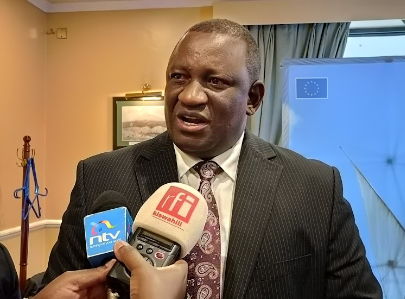The Mining and Blue Economy Ministry has announced a significant investment of Sh1 billion aimed at benefiting regions along Lake Victoria and the Indian Ocean. This investment is intended to harness opportunities within the water bodies to improve livelihoods and transform lives.
Cabinet Secretary Salim Mvurya revealed that the project targets 11 counties, focusing on more than 50,000 poor and vulnerable individuals, with a particular emphasis on women, who comprise 60% of the beneficiaries. The counties set to benefit include Kwale, Mombasa, Kilifi, Tana River, Lamu, Taita Taveta, Busia, Siaya, Kisumu, Homabay, and Migori.
A portion of the investment, amounting to Sh200 million, has been allocated to support three medium enterprises within the program. Mvurya highlighted various initiatives undertaken by the ministry, including the development of institutional reforms through policies such as the Kenya Fisheries Policy and the National Oceans and Fisheries Policy. Additionally, Marine Spatial Plans for the Indian Ocean and Lake Victoria basins have been developed and approved by the Cabinet.
Furthermore, the ministry is working on various fisheries management plans and strategies, such as those for Lake Turkana, small purse seine fishery, lobster fishery, marine aquarium fishery, prawn fishery, and others.
There is also an emphasis on multi-sectoral efforts to fully utilize blue economy resources. The ministry has developed regulations to operationalize the Fisheries Management and Development Act, 2016, covering various aspects of fisheries management and safety.
Senator Miraj Abdulrahman inquired about the progress in developing policies and legal frameworks for the blue economy, to which Mvurya responded by detailing ongoing efforts in policy development and regulatory formulation.
He also provided information on the disbursement of the Sh1 billion investment, particularly through the “Investing in Women in the Blue Economy in Kenya Project,” which aims to increase women’s engagement in the coastal and marine ecosystem, promote gender equity, and empower women within the blue economy sector.
The project, running from February 2022 to November 2026, focuses on enhancing opportunities for women’s participation, access to financing, leadership roles, and training programs within the blue economy.
It is estimated that 60 per cent of labour force in the fisheries sector is provided by women.
The CS said the ministry is increasing engagement of women within the coastal and marine ecosystem to not only ensure collective responsibility in the conservation and sustainable use of blue resources, but also increase opportunities for decent work and reduction of poverty at household levels.
“Kenya has targeted responses at policy levels to address obstacles faced by women and increase their participation in the blue economy-related activities and to empower them for immediate and long-term benefits,” Mvurya said.
He said the Cabinet approved the Kenya Fisheries Policy 2023, which seeks to mainstream gender equity in both public and private blue economy projects.
It will also provide training programmes and access to financing and promoting leadership roles to promote women inclusion in the sector.
The draft National Blue Economy Strategy is also being developed by the ministry and seeks to grow a sustainable and resilient blue economy by fully including women and their potential.



